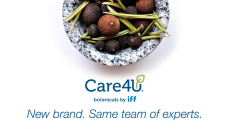Rice bran supplements could lower blood pressure
foods could lower blood pressure, says Japanese researchers who
have developed a new method of rice bran extraction.
Rice bran is waste that is normally discarded during rice processing and is naturally rich source of vitamins, minerals, and antioxidants. US company, NutraCea dominates both the human and animal markets, which have a total value of $12 million in the US.
The new study, published in the Journal of Agricultural and Food Chemistry (Vol. 54, pp. 1914-1920), investigated the effect of supplementing the diet of stroke-prone spontaneously hypertensive rats with rice bran.
The rats were divided into three groups. The first acted as the control and ate the base diet, the second and third groups had supplements of 60 grams per kilogram body weight of either Driselase (enzyme extracted) rice bran, or ethanol extracted rice bran.
After eight weeks of the diets, the blood pressure of both supplemented groups was about 20 per cent lower than the control group.
The supplemented groups also had significantly reduced blood levels of angiotensin-1 converting enzyme (ACE), an enzyme that converts angiotensin-1 to angiotensin-2, which is involved in narrowing of the blood vessels (vasoconstriction).
Lower levels of a marker for oxidative stress, 8-hydroxy-2'-deoxyguanosine (8-OHdG) were also observed in the supplemented groups than in the control.
These observations led the researchers from Japan's National Research Institute of Brewing to conclude: "Rice bran fractions appear to have a beneficial dietary component that improves hypertension, hyperlipidemia, and hyperglycemia."
The inverse association between rice bran and hyperlipidemia is not new, since NutraCea currently holds four patents with similar claims.
However, the link between rice bran and lower blood pressure is not so well demonstrated.
Lead author Ardiansyah explained that this was probably due to the mixture of vitamins, minerals, and antioxidants in the rice bran, like vitamin E.
"Oxidative stress plays an important role in the initiation and progression of cardiovascular disease," Ardiansyah said.
Ardiansyah stressed the use of enzymes in the extraction of rice bran components from its cell walls was new.
"I think enzymatic treatment will be more suitable for applications if we'd like to use [rice bran as] functional food," he said.
"There's much work being done on various bran fractions to nail down any health benefits," said Dr. James Seiber, editor of the Journal and director of the U.S. Department of Agriculture's Western Regional Research Center in Davis, Calif.
"This particular paper caught my attention for two reasons: the potential of bringing a waste product like rice bran into beneficial use, and the way the group went about their study with good controlled experiments using an appropriate model."
Hypertension, defined as having a systolic and diastolic BP greater than 140 and 90 mmHg, affects about 600 million people worldwide and is associated with over seven million deaths.











